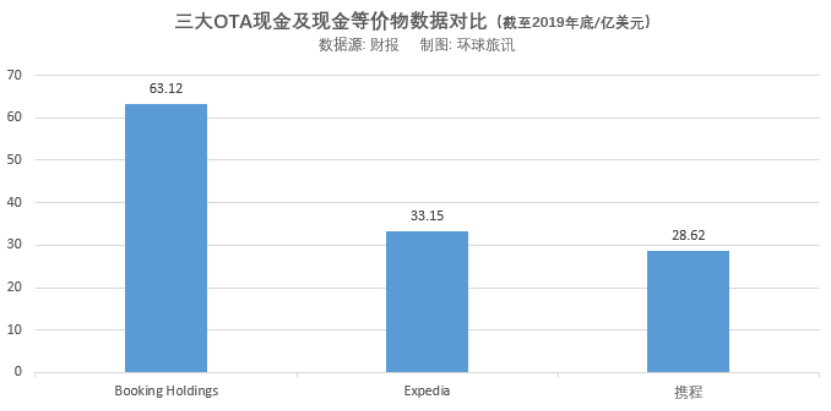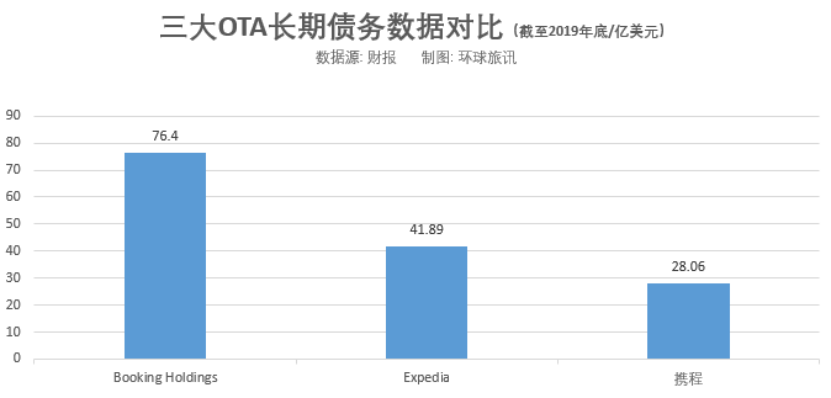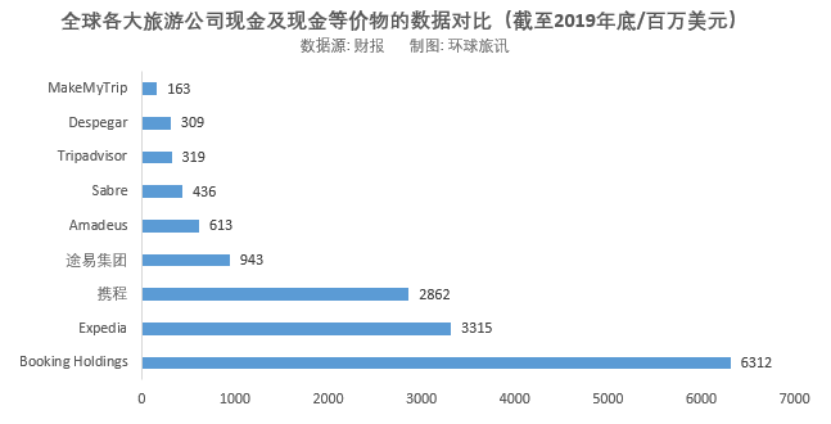Some companies that rely too much on debt financing may be in trouble.
Editor’s note: This article comes from the WeChat public account “Global Travel News” (ID: Traveldaily) , Elena synthesis Compiled from Booking Holdings, PhocusWire.
For many years, tourism companies have used low interest rates to borrow money to promote their own development and growth, but the shortage of funds and business decline after the outbreak of the epidemic may also cause some companies to be in trouble.
[Global Travel News] On the evening of April 8th, Beijing time, Booking Holdings issued SEC disclosure documents announcing the revision of its USD 2 billion revolving credit; at the same time, Booking Holdings also announced the start of the sale of approximately USD 750 million convertible priority Bonds.
Booking Holdings plans to use the net proceeds from the issuance of convertible preferred bonds for general corporate purposes, which may include debt repayment, including repayment of 0.35% due in June 2020 on the maturity date or before conversion Convertible senior bonds and 0.90% convertible senior bonds due September 2021.
Although it is impossible to accurately predict the final impact of the development of the new crown epidemic on its business, Booking Holdings predicts that the first quarter of this year ’s performance has been significantly negatively affected by the epidemic, total travel bookings, nights between bookings, total revenue, and net profit , Cash flow from operating activities and adjusted EBITDA both showed a significant year-on-year decline.
As the epidemic spreads, the number of newly booked room nights (excluding the impact of cancellations) has been declining, and has recently fallen by more than 85% compared to the same period in 2019.
As the epidemic gradually spreads from China and other Asian markets to Europe and the United States, Booking Holdings expects that the impact of the new crown epidemic on its second-quarter results this year will far exceed the impact on the first quarter.
In addition to the issuance of convertible senior bonds to repay debts, Booking Holdings also sold approximately 4.5 million shares of Ctrip ADS shares in the open market from March 23 to April 3 this year. The calculation of ADS shares is about 23.45 USD, and the total cash out is about 106 million USD.
Since the outbreak at the beginning of this year, OTA giants such as Ctrip, Booking Holdings and MakeMyTrip have successively taken measures to reduce the cost of senior executives to reduce wages, suspend recruitment and reduce flexible budgets to alleviate funding pressure.
It is not surprising that online travel companies are facing financial pressure due to the epidemic crisis, but look at the annual reports of various companiesThe cash reserves and liabilities disclosed in the article may be able to learn more than the impact of the epidemic.
Recently, PhocusWire researched the latest financial data of major online travel companies around the world and evaluated the debt, loan and cash flow status of these companies before the outbreak.
PhocusWire analysis believes that tourism companies have used low interest rates to borrow for many years to promote their own development and growth, but the outbreak of the epidemic may lead to a global economic recession, and some companies that rely too much on debt financing may be in trouble.
Booking Holdings
Booking Holdings ’long-term debt fell from US $ 8.65 billion in 2018 to US $ 7.64 billion in 2019.
As of the end of 2019, Booking Holdings issued convertible bonds of US $ 988 million.
The company’s cash and cash equivalents increased from US $ 2.62 billion in 2018 to US $ 6.31 billion in 2019.

Due to actual differences in business models and scale, as of the end of last year, the reserves of cash and cash equivalents of the world ’s three major OTA groups are still far from each other, and Booking Holdings is much higher than the other two competitors.
Ctrip
As of the end of 2019, Ctrip ’s short-term debt was $ 4.3 billion, long-term debt was $ 2.8 billion, and cash and cash equivalents were $ 2.86 billion.
On April 3, Beijing time, Ctrip announced that it has entered into loan agreements with a number of financial institutions up to a total of 1.5 billion US dollars. The proceeds may be used for the company ’s general working capital needs, including repayment of any existing debt. .

Compared with the cash reserve data, the long-term debt of the three largest OTA groups in the world also showed similar differences. The long-term debt borne by Booking HoldingsFar higher than Expedia and Ctrip.
Expedia Group
Excluding debt due, Expedia Group ’s long-term debt increased from US $ 3.717 billion in 2018 to US $ 4.189 billion in 2019.
As of the end of 2019, the Expedia Group has a $ 2 billion unsecured revolving credit line that has not been used.
On March 18 this year, a few days after Expedia Group revoked its expectations for 2020 performance, the group borrowed $ 1.9 billion under a credit agreement.
According to the documents submitted by the Expedia Group to the US Securities and Exchange Commission, this loan will be used as a “precautionary measure” to provide the Group with more cash flow to ensure financial flexibility and thus respond to the negative impact of the outbreak of the new crown epidemic and Uncertainty.
The document shows, “The revolving loan proceeds will be used for the company ’s regular expenses, including as working capital.”
In addition to this new loan, Expedia Group also has a $ 750 million senior bond due in August this year.
The group’s cash and cash equivalents increased from US $ 2.4 billion in 2018 to US $ 3.3 billion in 2019.
Despegar
Latin American OTA Despegar, which had been invested by Expedia Group, has a bad debt fee of US $ 2 million in 2019, mainly related to the Brazilian airline that was grounded in June last year.
Despegar ’s loans and other financial liabilities decreased from US $ 31 million in 2018 to US $ 19 million in 2019. But its cash and cash equivalents fell from US $ 346 million at the end of 2018 to US $ 309 million at the end of 2019.
MakeMyTrip
As of March 2019, the total loan of MakeMyTrip was US $ 474,000, which increased to US $ 23 million by June 2019. As of December of the same year, MakeMyTrip debt fell slightly, to 22.7 million US dollars. The OTA’s cash and cash equivalents fell to US $ 163 million from US $ 177 million during the same period.

TUI Group
As of December 2019, TUI Group ’s net debt for continuing operations has expanded from 3.2 billion euros ($ 3.48 billion)Up to 5 billion euros (5.4 billion US dollars).
The company attributed the debt expansion to its first adoption of IFRS 16 (IFRS 16).
In the fourth quarter of 2019, TUI Group ’s cash and cash equivalents fell from 1.74 billion euros to 866 million euros ($ 943 million).
Sabre
From 2018 to 2019, Sabre ’s long-term debt was reduced from $ 3.3 billion to $ 3.2 billion. Over the same period, cash and cash equivalents fell from $ 509 million to $ 436 million.
Amadeus
As of the end of 2019, Amadeus ’net debt fell from 2.074 billion euros (US $ 3.35 billion) at the end of 2018 to 2.758 billion euros (US $ 3 billion). Free cash flow increased by 5.7% over the same period. Total cash and cash equivalents amounted to 564 million euros ($ 613 million).
Hostelworld
As of the end of 2019, Hostelworld ’s booking platform Hostelworld has no debt on its books, with cash and cash equivalents of 19.4 million euros ($ 21.12 million).
As part of the shareholder acquisition agreement, Hostelworld has reserved a $ 500,000 loan line for use by its subsidiary Goki.
TripAdvisor
As of December 2019, TripAdvisor has $ 319 million in cash and cash equivalents, and it has no outstanding debt. Being free from debt can make TripAdvisor more flexible to deal with the current economic environment.